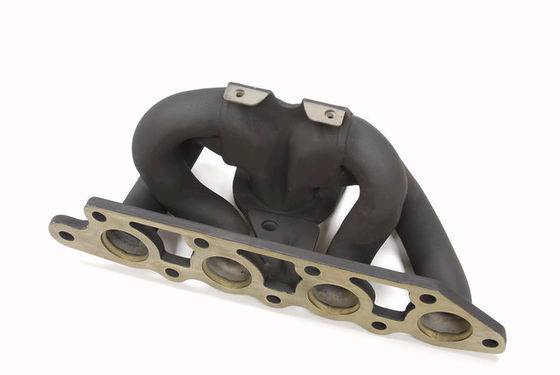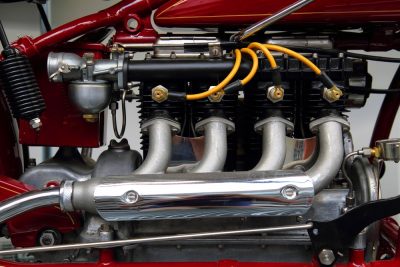Replacing your Vehicle’s headers can boost your engine performance.
However, choosing a short Tube vs a long tube header depends on your desired outcome.
We are sure that you don’t need rocket science to know that you need a header for exhaust gases to leave your engine.
Therefore, this article will analyze the long tube vs short tube header to equip you with the correct information for your next exhaust upgrade.
What is a Long Tube Header?
Generally, a header is a tube connected to your cylinder to help remove exhaust efficiently.
The removal of the exhaust helps to relieve back pressure.
With the right header, your engine cylinders’ performance is greatly improved.
The long tube header usually flows from the engine to the mid-pipe.
Its design ensures that you get significant performance boosts.
Long tube headers are your best option if you have a track car.
Or an engine whose RPM range is high.
However, you have to keep in your mind long tube headers are loud.
What is a Short Header?
Although they are called short tube headers, they aren’t that short at all; especially when compared to the exhaust manifold.
The name is due mainly to the single fact that it is shorter than its long tube counterpart.
So, with a short tube header, you can still use all your exhaust components without any hassle.
Shorties, as they are also called, are best for a turbo-boosted engine but can be used in many different engines.
If your main goal is to increase the performance of your everyday use car, then shorties should be your choice.
Another thing to consider when buying a shorty header is that it is of two types.
01. Equal length header: which offers better and consistent performance gains.
02. Unequal length header: is ideal if you like deeper rumbling and low-end torque power.
Shorty Vs Long Tube Headers [Differences, Similarities with Pros and Cons]

There are many differences between long tube and short tube headers.
The first difference you will notice between a long tube header and a short one is the length of their pipes.
The short tube header is joined into a single exhaust that is not far away from the engine’s exhaust ports.
At the same time, the long tube port pipe is joined further out.
Apart from the above, here are some major differences between long tube vs short tube headers that we find out for you.
Horsepower Difference
The long tube header provides a higher horsepower gain than the short tube header.
The long tube header works best at a high RPM scale, while the short tube works best at the lower end of the RPM scale.
So, if your goal is to give your truck more horsepower gain, you should go for a long tube header.
But if you want to drive in a standard or economical mode then a short tube header is more than enough for you.
Sound Difference
Due to the long length of long tube headers, they tend to produce louder and meaner sounds.
Even when idle, the roaring sound is still amazing to the ears.
However, the shorty has a medium to low level of sound. Not very much if you ask us.
Here is a video of a comparison between shorty vs long tube headers’ sound
MPG Difference
When it comes to fuel efficiency, this is where the short tube header takes the crown.
Due to its short pipe length, the exhaust flows more quicker, thereby delivering power efficiently.
And since it works best at a lower RPM range, it is suitable for everyday use kind of vehicles.
On the other hand, the long tube header is less fuel-efficient because the length of the pipe requires more air to get into the engine.
And this makes the engine takes up more fuel.
Tuning Difference
A tune is crucial in installing a header (be it long or short) to deliver the right performance.
If your car is running on an ECU, then you have to adjust it to provide the right air-fuel ratio to enable the header to work better.
However, if your car has a carbureted V8 engine instead, you don’t need a tune.
The legality of Long Tube Vs Short Tube Headers
Short tube headers are legal everywhere, but long tube headers are not legal everywhere.
The loud sound that the long tube header produces is one major reason it is not legal in some states of the USA including California.
Cause it is considered tampering with the vehicle’s stock emission system.
According to Environment Protection Agency (EPA), it’s completely illegal under Federal law.
In addition, depending on the type of long header you want to install, you will either have to relocate or remove the catalytic converter.
So, remember to research the noise restriction laws you live in to ensure your next header upgrade.
Installation
Short tube headers are easy to install, but long tube headers are more challenging to install than short tube headers.
The reason is that the long tube header may be too long for the exhaust components.
As such, you will need to do more work to get it to fit perfectly.
Cost of Long Tube Vs Shorty Headers
The cost of headers depends mainly on the fabrication quality, complexity, and materials it is made of.
Based on this, short tube headers tend to be more expensive as they require lots of fabrications.
Therefore, the price range for a short tube range between $370 to $600.
In contrast, the long tube header price ranges from $130 to $400.
Then again, remember that the long tube is not legal in some states, so that’s why it’s cheaper.
Similarities Between Shorty vs Long Tube Headers
There are also some similarities between long tube vs short tube headers despite differences.
And below are some of the similarities-
Tuning
Tuning is recommended for both short and long tube headers.
Whenever you get a new header, it is best to tune it.
That is because tuning provides lots of benefits that include
01. It maximizes performance by increasing low-end torque and horsepower gains.
02. It helps to alter several variables in the vehicle, such as the throttle response, to make your vehicle more powerful.
03. When you tune your header after installation, it prevents your check engine light from popping up.
Tuning is the only solution to this after header installation.
Pros and Cons of Long Tube Headers
It is difficult figuring out which header is best for you since it depends on your personal choice.
That’s why we decided to outline the pros and cons of the two types of headers to help you out.
Let’s start with the long tube header.
See below-
Pros
- A long tube header always gives a significant performance boost to your engine
- The roaring sound is just awesome and powerful
- Work well for high RPM uses
- It also works well with a supercharged or stock exhaust
Cons
- It’s not legal in some states, so ensure it is legal where you are before installing
- A long tube is not compatible when it comes with turbocharged exhaust or engines
- It is tricky and challenging to install
Pros and Cons of Short Tube Headers
Pros
- It is easy to install
- It is compatible with turbocharged engines and exhausts
- Also, it is legal everywhere you go. So, no need to worry.
Cons
- It is at the low-end of the RPM
- Unlike its long tube counterpart, it is not loud
Shorty or Long Tube Headers, Which is Better for Me?
There are many similarities and dissimilarities between shorty vs long tube headers.
It’s difficult for us to find out the right headers for your vehicle as it’s a personal choice of yours which depends on some specific factors.
Read the article carefully and watch the video to choose which suits you best.
This comparison video will guide you to understand the differences between shorty vs long tube headers
How to Measure Shorty and Long Tube Headers
We are going to cover the basics of how to measure your header.
When you intend to fix together custom exhaust systems, you must know how they are sized in the industry.
From the pipe to the mufflers to reducers and tip, each has its size and how to measure them.
Before starting your measurement, you have to take note of two terms:
The outer diameter (O.D) and the inner diameter (I.D).
Now let’s see how some components of a header are measured.
Pipe
The O.D mode of measurement is used to measure the pipe.
To do this, take a tape measure and run it across the pipe opening; the number you get is the same as the outer diameter of the pipe.
This is for pipes whose tips have a straight cut.
So, to measure pipes with a sliced cut at the end, you take a rope and wrap it around the pipe.
Measure the rope length along the tape to get the circumference of the pipe.
Then divide the number by 3.14 pi to get the actual measurement of the tip.
If the size is not an exact number, don’t worry; round up to the nearest figure.
Mufflers and exhaust tips
The I.D mode is used to measure your muffler. It is generally designed to form a lap joint with a pipe.
So, when you see a 3″ pipe and a damper of the size, it means that the tube can slide into the muffler’s opening.
Once you have slid it in, you use a saddle clamp to secure it or weld the seams to prevent leakage.
This video will help you to visualize the measurement process of the header.
Choosing the Right Header for My Vehicle
Headers are essential to the smooth running of your engine.
It is tough trying to get the best fit for your engine.
That’s why we have carried out all the intensive research to bring you all you need to know to choose the right header.
So, buckle up and continue reading.
A great pair of headers allows enough exhaust flow, which creates energy pulses that helps scavenge gases from your engine.
But you may be thinking, what then makes a good header?
Below are some of the things to consider.
Size of the header
First, you should know that bigger is not always better.
When choosing a header for your engine, the diameter of the main components (i.e., the pipes that connect to the exhaust ports) is the most crucial aspect.
To choose the right diameter of the tube, you have to consider the size of the engine, what the vehicle is used for, and its horsepower.
This is where most people make the mistake of the bigger, the better.
Even though small diameter pipe allows less flow volume, they create a faster exhaust flow.
This is why most manufacturers recommend medium pipe diameter.
The material composition of the header
Most headers are either made of steel or stainless steel.
Steel headers are less expensive but don’t have the long-lasting durability of the stainless-steel header.
Stainless steel headers last longer and are rust free which helps to ensure that there is a smooth exhaust flow.
Type of coating on the header
Once you have chosen the header type, the next issue is what coating is the best.
Ceramic coating is the most common type, and this is because it provides an additional thermal barrier.
The ceramic coating ensures that heat is isolated inside the primaries, keeping the engine’s temperature low.
There are also naturally coated headers.
But they are not as durable or efficient as ceramic-coated ones.
Final Thoughts
We made a detailed comparison of long tube headers vs shorty headers.
We hope with all the information above, you can now make your decision about which header is best for your vehicle.
